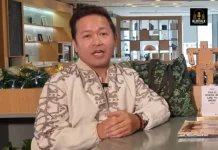
Astronaut spacesuits may soon be lined with Philippine abaca after a De La Salle University (DLSU)-led science team completes its research project.
DLSU’s I-Nano Solutions, a research facility committed to developing nanotech products and services for both industry and society, is leading the collaborative research project with Technological University of the Philippines, FEATI University, Philippine Nuclear Research Institute, and the Philippine Textile Research Institute.
The Php15 million project that focuses on the application of abaca fabric for space suits, supported and funded by the Department of Science and Technology (DOST) EXECOM, broke ground in February 2020 and is set to be completed by January 2022.
The research project titled “Fabrication and Characterization of Hydrophobic Nanocomposite Plated Abaca Fabric for the Enhanced Electromagnetic Interference Shielding (EMI-SE) and Thermal Resistance (TR) for Spacesuits Application” seeks to create a less expensive but competitive Thermo Mechanical Garment (TMG).
TMG is the outermost layer on space suits that is responsible for the protection of astronauts from extreme temperature changes and electromagnetic waves.
The study aims to fabricate a layered structure of fabric out of Abaca fibers coated by nanocomposite material that can provide space suits and other materials used in space exploration with better electromagnetic interference shielding and thermal resistance.
Since the start of space exploration in the 1960s there has been a constant demand for new products and technology that can provide more protective spacesuits with better mobility for space explorers.
Exposure to harmful electromagnetic waves and extreme temperature condition in space are the most life-threatening factors to consider in designing spacesuits,” according to Dr. Gil Nonato Santos, Vice Chancellor of the DLSU Laguna Campus and head of the I-Nano team I-Nano team in the DLSU report released on February 12.
In 2019, Lasallians won the NASA Space Apps Challenge Manila and moved on to the global qualifiers.
More space technology research are being done at the University of the Philippines (UP) ULyS3ES, the new home for Filipino space scientists, engineers, and technology research. The UP-DOST collaboration has resulted in the first Philippine-made microsatellites – Diwata 1 and Diwata 2 – and now offers Nanosatellite space technology scholarships to students.
SEND WELL WISHES in the comments below to the DLSU-led Philippine science team as they develop spacesuits lined with local abaca fiber!
Want to know how to be a Proud Pinoy? Like, Follow, Subscribe to GoodNewsPilipinas.com and our socials Facebook, Twitter, Instagram, Good News Pilipinas! TV on YouTube, for new story notifications and e-mail newsletters for updates on more Filipino Pride stories.










